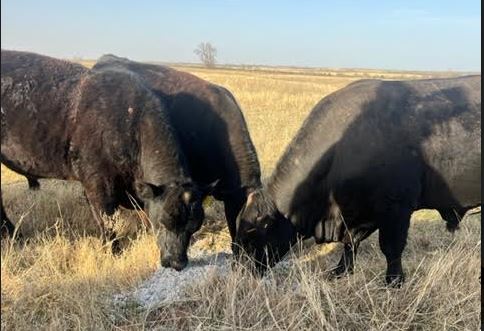
Weekly, Oklahoma State University Extension Beef Cattle Nutrition Specialist Paul Beck offers his expertise on the beef cattle industry. This is a part of the weekly series known as the “Cow-Calf Corner.” Today, he talks about disadvantages of receiving bulls in a stocker program during grazing and finishing.
Intact bulls often receive price discounts at auction markets. Last week we looked at the impacts of leaving bull calves intact on performance and health during receiving (https://extension.okstate.edu/programs/beef-extension/cow-calf-corner-the-newsletter-archives/2024/april-29-2024.html). Estimates of discounts range from $5/hundred pounds up to $11.25/hundred pounds from past market survey reports. However, recent USDA livestock auction reports from the Southeast (Arkansas Department of Ag Mkt News, April 10, 2024; https://mymarketnews.ams.usda.gov/viewReport/2056) show discounts of $16.50/hundred pounds for 400 to 500 pound bulls. These discounts at auction markets signal producers to castrate male calves before marketing.
We analyzed receiving records from Mississippi, Arkansas and Oklahoma and found that bulls were 2.4-times more likely to be pulled and treated for bovine respiratory disease (BRD), 1.2-times more likely to be a chronic, and 2.3-times more likely to die from BRD than steers and gained ½ pound less per day. This made the receiving cost of bulls to be $64 per head more than steers. Bulls are less productive and more expensive to receive than steers, but how long do these impacts last?
Tracking calves after receiving onto high quality pastures showed that calves treated for BRD were lighter when they started grazing and remained lighter at the end of grazing. For instance, calves that never required treatment for BRD weighed 550 pounds at the start of grazing and gained 2.5 pounds per day compared to 2.4 pounds per day for calves treated for BRD. Calves only treated once for BRD were 18 pounds lighter (532 lbs) where calves treated twice for BRD weighed 517 pounds at turnout and calves that required a third BRD treatment weighed only 504 pounds at turnout. With no compensatory gain the differences in bodyweight due to BRD at turnout on grass were still present following grazing.
A smaller subset of calves was followed through finishing after the grazing phase. Lifetime performance from initial receiving through the stocker grazing phase and finishing was still impacted by health during receiving prior to the stocker phase many weeks earlier. This resulted in reduced bodyweight at harvest as well as reduced hot carcass weight and increased the days on feed required to reach harvest. Only calves that were deemed healthy and fully recovered from BRD after the receiving period were used in the grazing phase and were further selected for health status after grazing when followed through finishing.
Bovine respiratory disease has long-term implications on performance not only during the receiving period but also impacts BW and productivity through the stocker grazing phase and finishing. Decreased performance and carcass quality along with increased days on feed to reach similar carcass endpoints were apparent even following an extended grazing period.
The cost of bulls during the receiving period through increased health issues and reduced performance indicate that larger discounts are likely needed for equal profitability to steer calves.


















